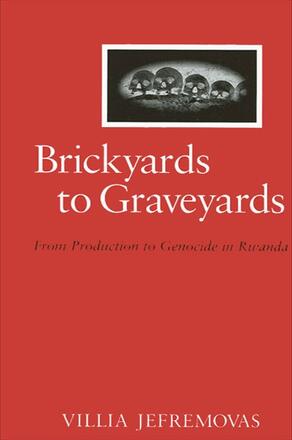
Brickyards to Graveyards
From Production to Genocide in Rwanda
Alternative formats available from:
Explores how the conditions that shaped Rwanda's labor organization and industries also shaped Rwanda's genocide.
Description
Brickyards to Graveyards examines how the overidealized picture of Rwanda as the darling of the world community in the 1980s was shattered amidst the genocide that occurred a decade later. The brick and tile industries of Rwanda provide a microcosm to examine the transformation of gender, class, and power relations through the precolonial, colonial, and postcolonial periods, and provide insights into the explosive impact of these changes on Rwandan culture and society. The book illustrates how these gender, class, and power relations played out in times of economic, political, and demographic crisis, and argues that these factors have not changed significantly since the Rwandan Patriotic Front took power in 1994.
Villia Jefremovas is Adjunct Research Professor of Geography and Environmental Studies at Carleton University.
Reviews
"…one of the strengths of Jefremovas's book is that it is filled with people … [her] discussion of the genocide itself is complex and detailed. Her grasp of Rwandan history and the literature on the genocide is subtle and sophisticated … Brickyards to Graveyards is an important addition to the literature on genocide. " — H-Net Reviews (H-Genocide)
"Powerfully concise analysis and rigorous methodology, which melds ethnographic vignettes with interview data and quantitative research, make this volume a significant contribution to Rwandan studies … should be read by anyone studying gender, land tenure, or labor in Rwanda or the Great Lakes region of Africa. In addition, those examining the (often hidden) role of women in labor market economies in developing countries could learn a lot here about research methodology. " — African Studies Review
"This well-written and thoughtful book provides a particularly fine illustration of the way in which detailed fieldwork focusing on a clearly defined and limited subject, in this case brick- and tile-making industries in clay marshes, can unfold to offer explanations that contribute to understanding grand events such as the Rwandan Genocide. " — Journal of the Royal Anthropological Institute
"Brickyards to Graveyards … combines an insightful demonstration of the pre-genocide dynamics of economic production in Rwanda. And there is a sobering, realistic note at the end: the patterns of power and inequality that Rwanda has known since the mid-nineteenth century have not changed in the aftermath of the 1994 genocide. " — African Affairs
"Having painted a portrait of Rwanda in the 1980s in which ethnicity was less significant than regional and class considerations in social and economic relations, the author then explains how the situation became polarized during the 1990s. She offers a persuasive account that delineates the complex interplay of elite manipulation, wartime conditions, economic crisis, class inequality, past ethnic conflict, and popular fears fed by propaganda. " — Catharine Newbury, author of The Cohesion of Oppression: Clientship and Ethnicity in Rwanda, 1860–1960
"This book was a pleasure to read. In an age when much scholarship, especially anthropological scholarship, has descended into trivia, it is a welcome change to read a book that shows painstaking fieldwork and is able to integrate that work into an explanation for one of the greatest tragedies of our time. " — Robert Shenton, Queen's University